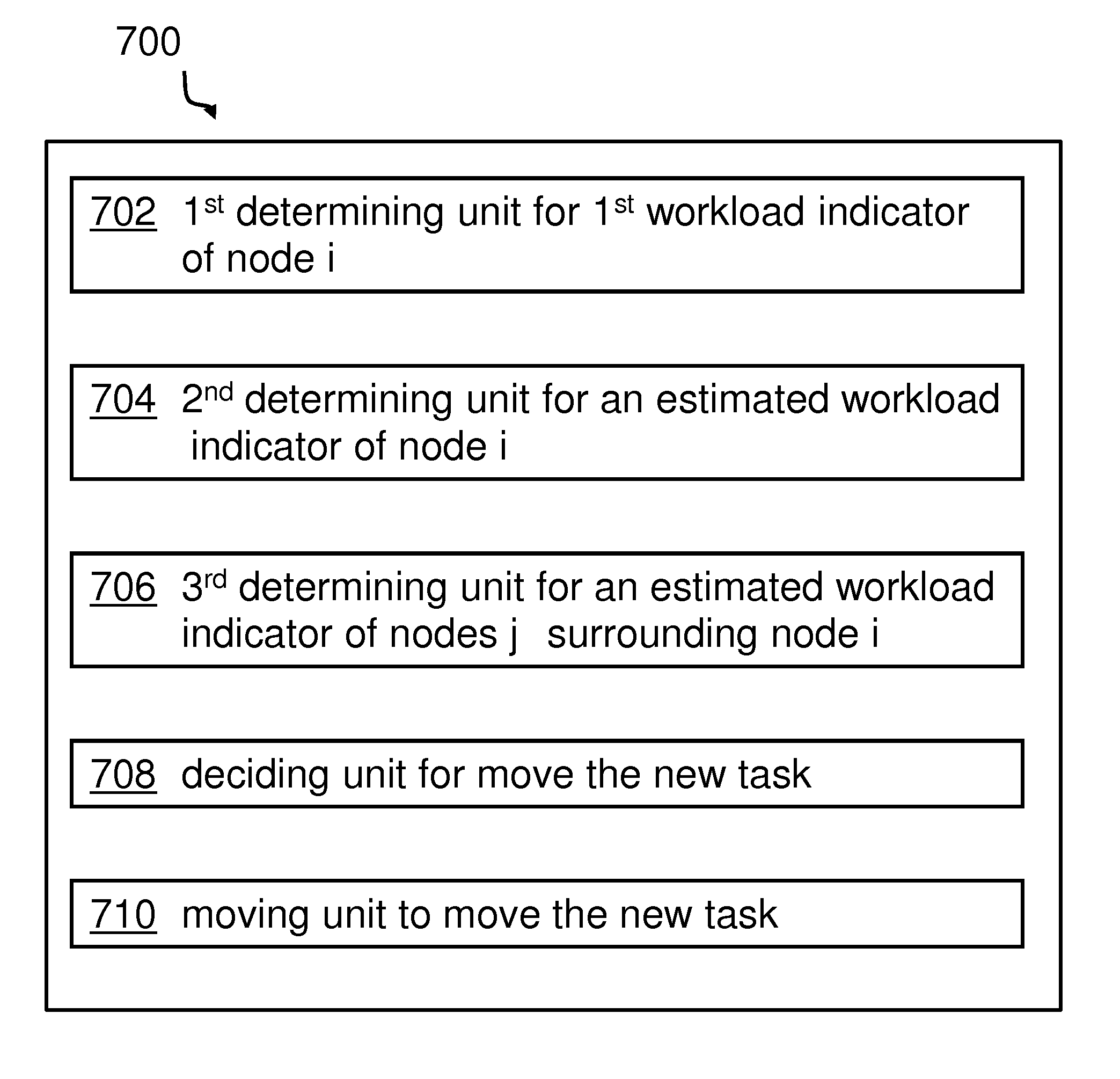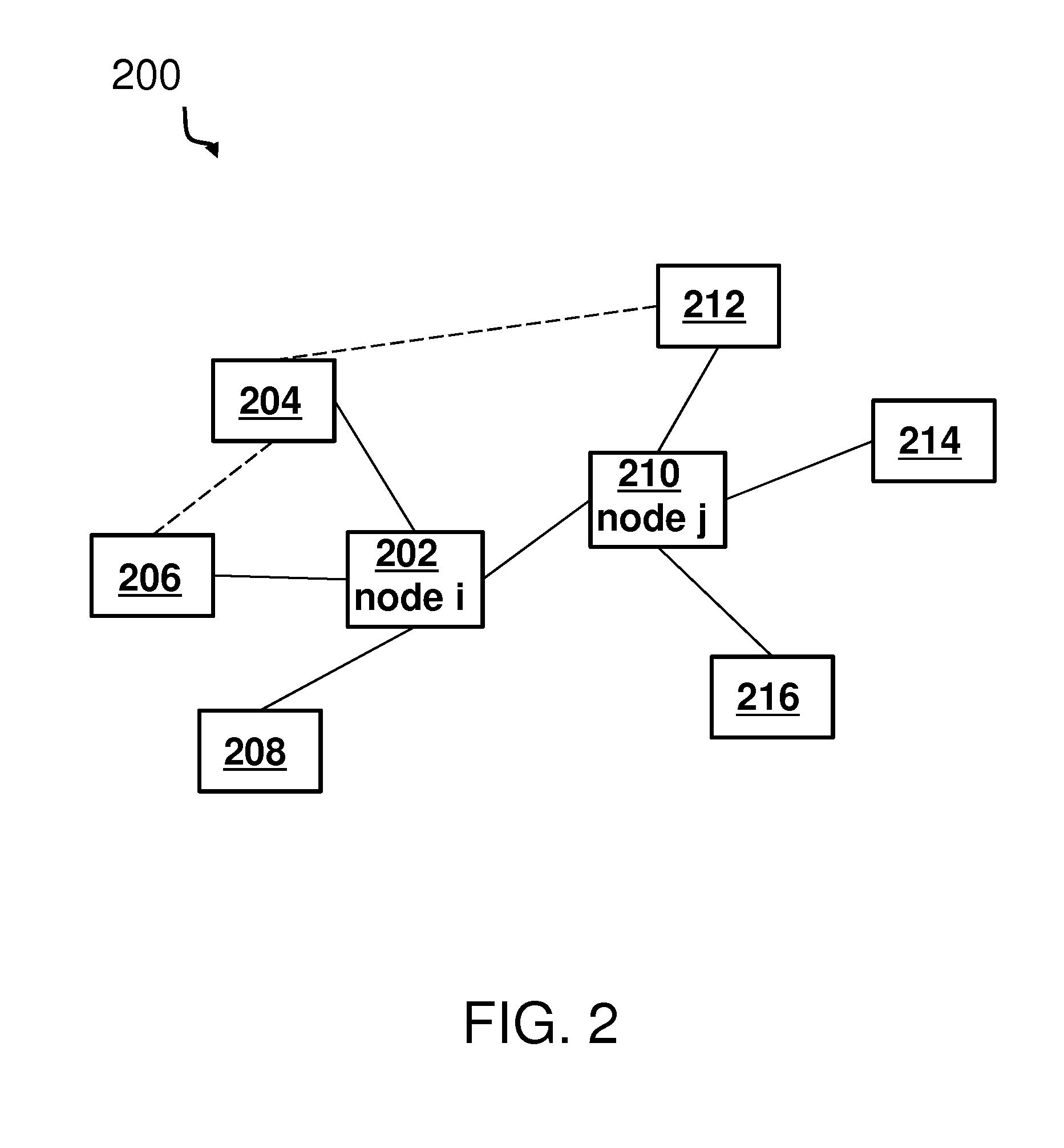Collaborative method and system to balance workload distribution
a workload and collaborative method technology, applied in the field of balanced workload distribution, can solve the problems of complex adaptation of resource utilization, scalability, adaptability and optimization of resource utilization,
- Summary
- Abstract
- Description
- Claims
- Application Information
AI Technical Summary
Benefits of technology
Problems solved by technology
Method used
Image
Examples
Embodiment Construction
[0022]In the context of this application, the following conventions, terms and / or expressions may be used:
[0023]The term “connected graph” may denote a topology of computing nodes such that each node may be reachable starting from any computing node. There may not only be one path to reach a node, but several. But at least one path may exist such that isolated subsystems may not exist.
[0024]The term “workload indicator” may denote one or more parameter(s) characterizing a computing node. It may be expressed as a scalar value, or alternatively it may be a vector of different parameters like CPU usage, memory usage, network usage, I / O rate, number of processes managed, number of treads processed in parallel. All of these parameters may be time dependent and may be measured or determined for different pre-definable time intervals. This setting may de definable by a user. Alternatively, the relevant parameters may be determined automatically by the computing nodes based on workload patt...
PUM
 Login to View More
Login to View More Abstract
Description
Claims
Application Information
 Login to View More
Login to View More - R&D
- Intellectual Property
- Life Sciences
- Materials
- Tech Scout
- Unparalleled Data Quality
- Higher Quality Content
- 60% Fewer Hallucinations
Browse by: Latest US Patents, China's latest patents, Technical Efficacy Thesaurus, Application Domain, Technology Topic, Popular Technical Reports.
© 2025 PatSnap. All rights reserved.Legal|Privacy policy|Modern Slavery Act Transparency Statement|Sitemap|About US| Contact US: help@patsnap.com



